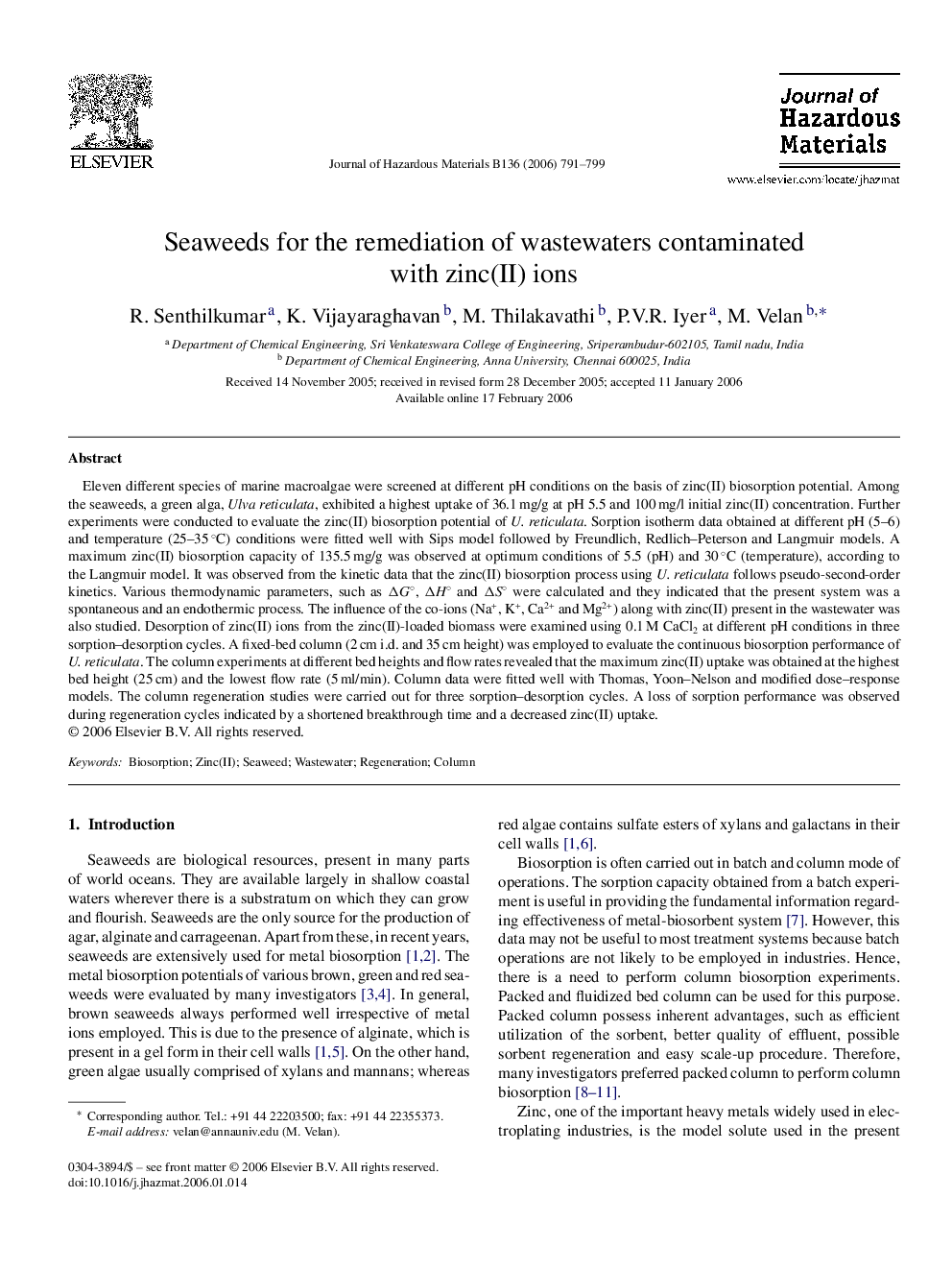| کد مقاله | کد نشریه | سال انتشار | مقاله انگلیسی | نسخه تمام متن |
|---|---|---|---|---|
| 585600 | 877916 | 2006 | 9 صفحه PDF | دانلود رایگان |

Eleven different species of marine macroalgae were screened at different pH conditions on the basis of zinc(II) biosorption potential. Among the seaweeds, a green alga, Ulva reticulata, exhibited a highest uptake of 36.1 mg/g at pH 5.5 and 100 mg/l initial zinc(II) concentration. Further experiments were conducted to evaluate the zinc(II) biosorption potential of U. reticulata. Sorption isotherm data obtained at different pH (5–6) and temperature (25–35 °C) conditions were fitted well with Sips model followed by Freundlich, Redlich–Peterson and Langmuir models. A maximum zinc(II) biosorption capacity of 135.5 mg/g was observed at optimum conditions of 5.5 (pH) and 30 °C (temperature), according to the Langmuir model. It was observed from the kinetic data that the zinc(II) biosorption process using U. reticulata follows pseudo-second-order kinetics. Various thermodynamic parameters, such as ΔG°, ΔH° and ΔS° were calculated and they indicated that the present system was a spontaneous and an endothermic process. The influence of the co-ions (Na+, K+, Ca2+ and Mg2+) along with zinc(II) present in the wastewater was also studied. Desorption of zinc(II) ions from the zinc(II)-loaded biomass were examined using 0.1 M CaCl2 at different pH conditions in three sorption–desorption cycles. A fixed-bed column (2 cm i.d. and 35 cm height) was employed to evaluate the continuous biosorption performance of U. reticulata. The column experiments at different bed heights and flow rates revealed that the maximum zinc(II) uptake was obtained at the highest bed height (25 cm) and the lowest flow rate (5 ml/min). Column data were fitted well with Thomas, Yoon–Nelson and modified dose–response models. The column regeneration studies were carried out for three sorption–desorption cycles. A loss of sorption performance was observed during regeneration cycles indicated by a shortened breakthrough time and a decreased zinc(II) uptake.
Journal: Journal of Hazardous Materials - Volume 136, Issue 3, 25 August 2006, Pages 791–799